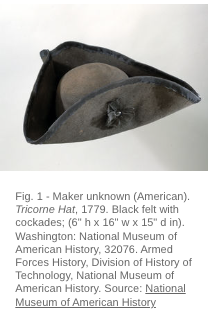Millinery Man
The buyer was extremely proud to hand over two thrifted straw hats to our milliner. They are the perfect size for Armand, who was happy to watch the Milliner work her magic.
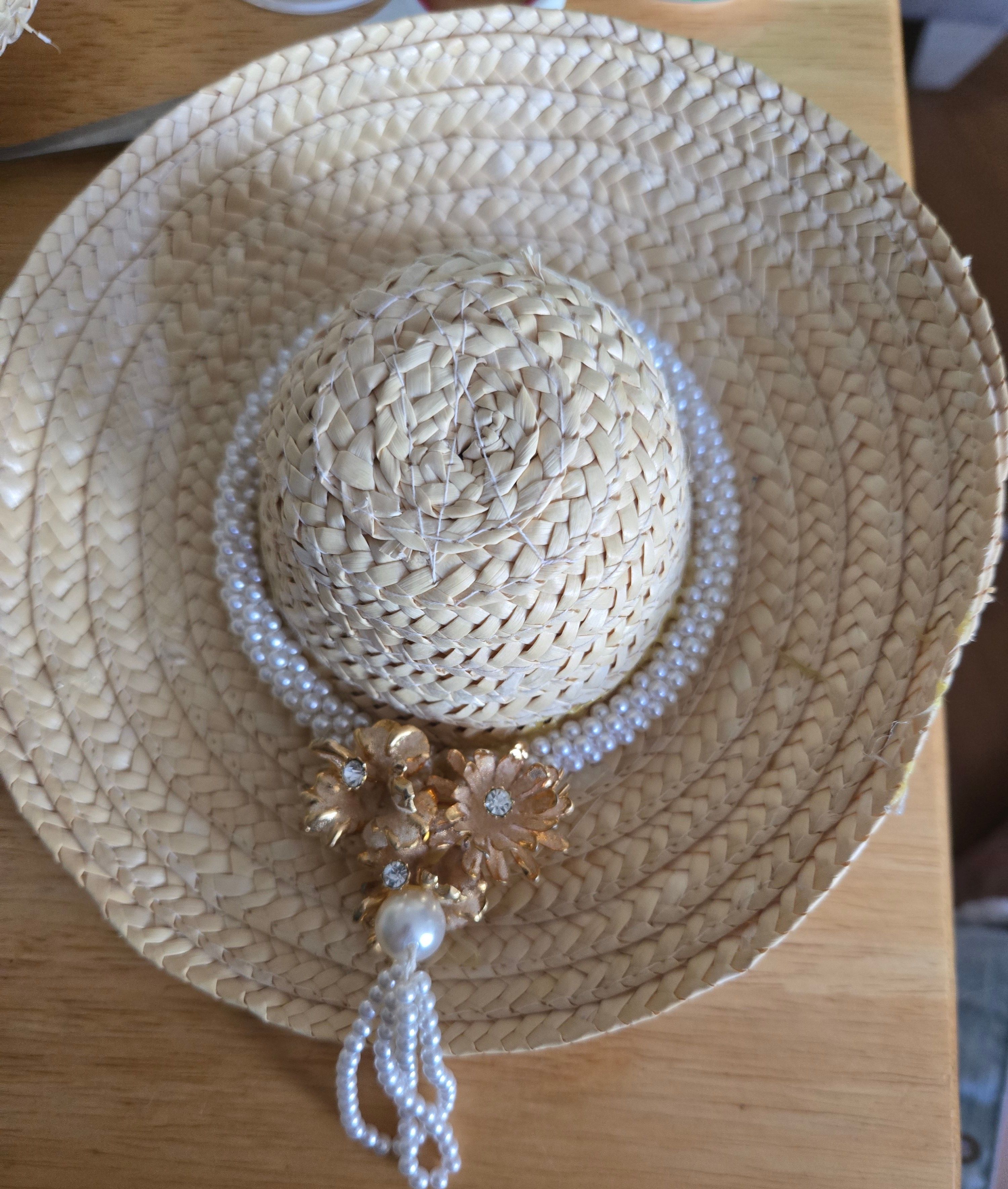
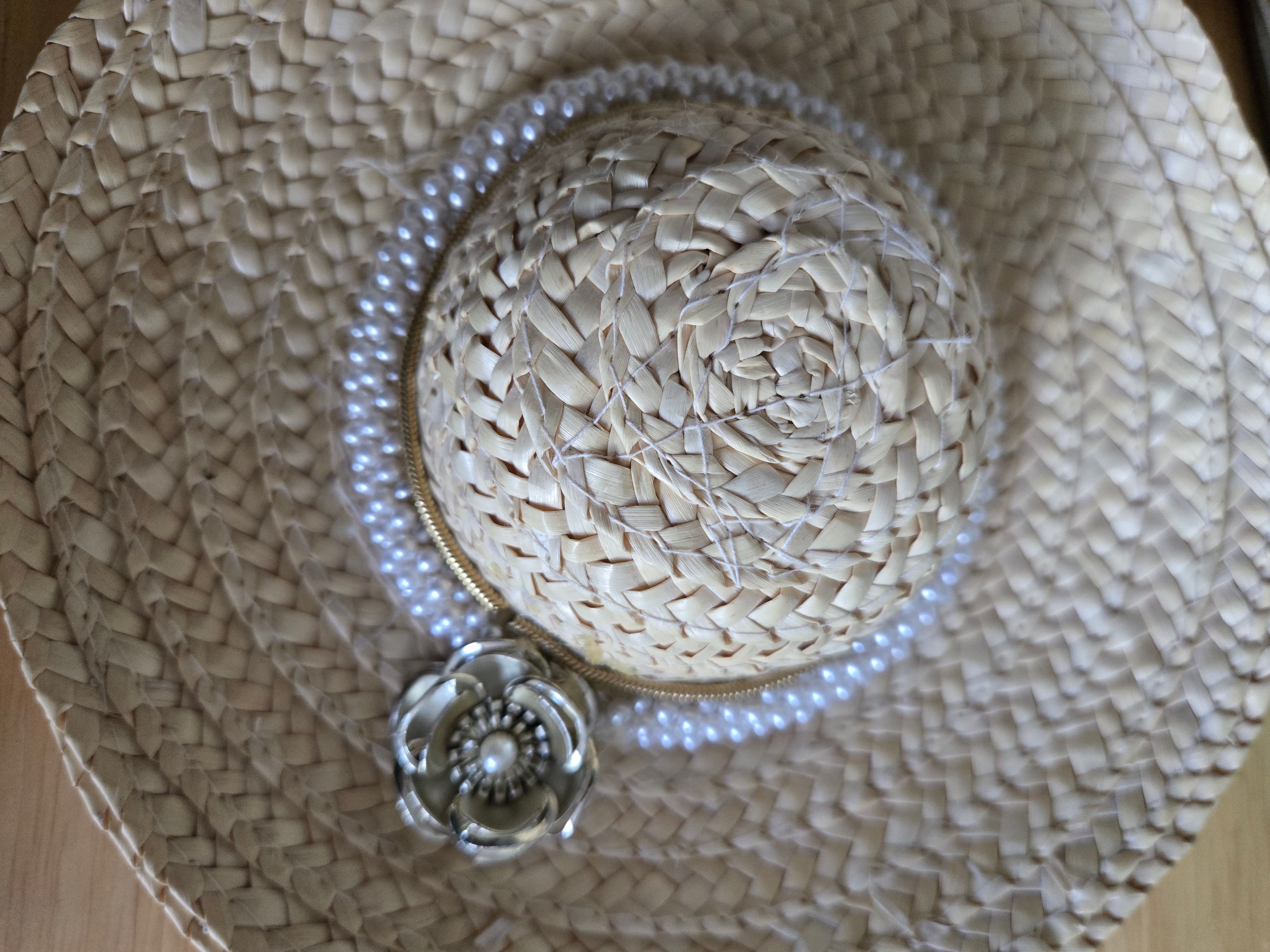
First, all the trimmings were carefully removed. Sadly the previous wearer glued, and glued, and glued the trimmings in place. Had they used hot glue it might have been removed easily. But what ever it was, many of the solid globs of adhesive remain deep inside the reshaped brims. Using glue to add trims to garments or hats is verboten in the theatre. Costumes are used again many times over, and often restyled to suit the designer. The Boss walked around shaking her head 'no' the whole afternoon.
The decision was made to make Armand a 'cocked' hat, or what is usually referred to as a tricorn.
Research did not provide much help on whether tricorn hats were made from straw. Though most references stated with certainty that they must have been worn by workers or lower classes in general. One reference did mention a story that Italian hat makers, known for the quality of their work, made straw tricorns dyed black to help beat the summer heat. So it was decided to go with that idea.
After fighting with the glue, the milliner was able to shape the straw using just her hands and a shot or two of steam from her iron. The straw was not brittle, but took shape easily.
The first look at the shape on Armand was correct, but over sized. So the milliner removed a line of straw. The chain stitch made that easy to achieve and after a titch of glue to keep the cut end from unravelling, she stitched the straw back down. The cut piece was then used for sampling.
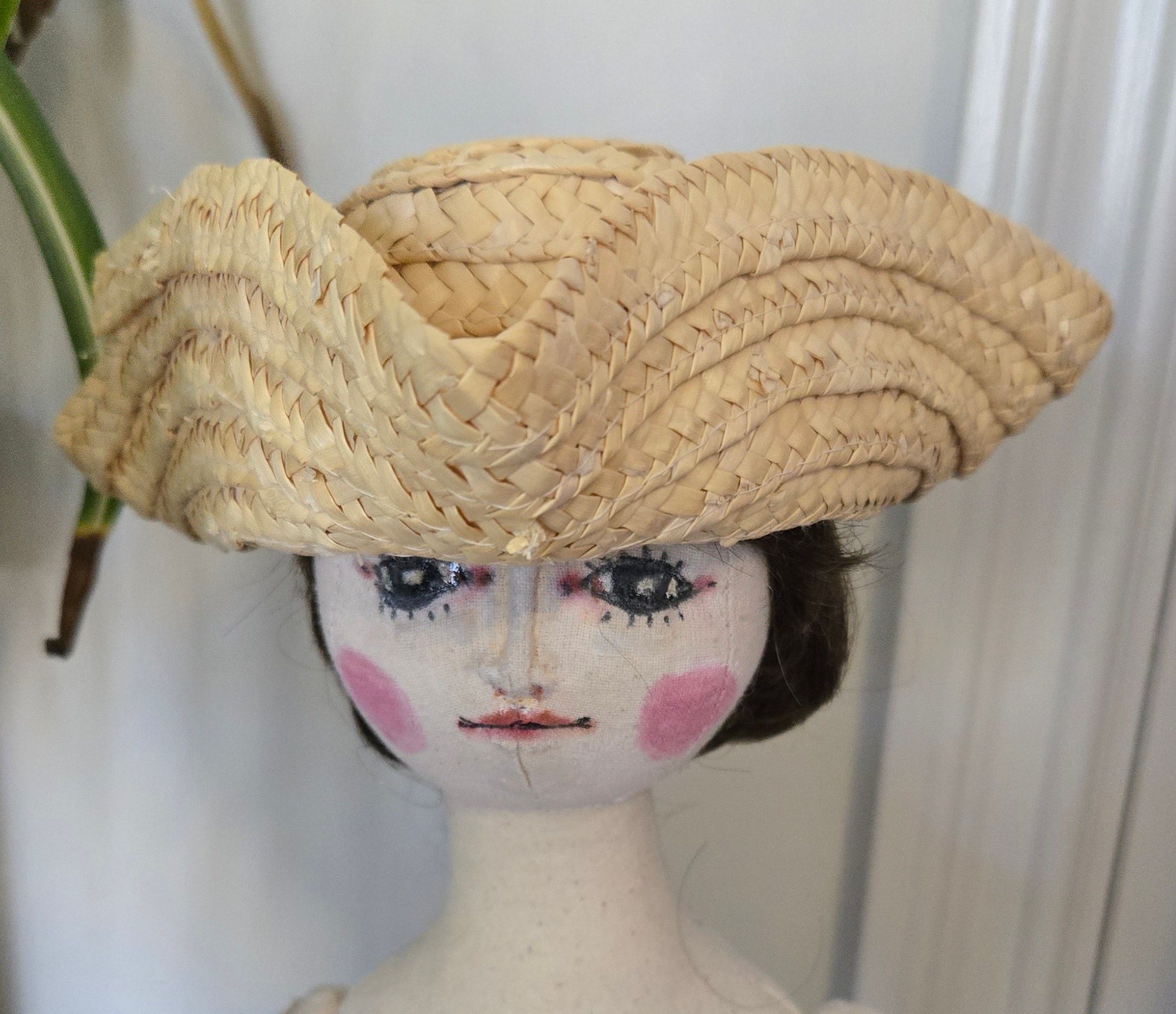
Next came the challenge of colouring the hat. Felt pen left a weird shine on the straw sample, and did not cover well. Plus it was smelly. So an acrylic paint was sampled straight from the bottle and then approved.
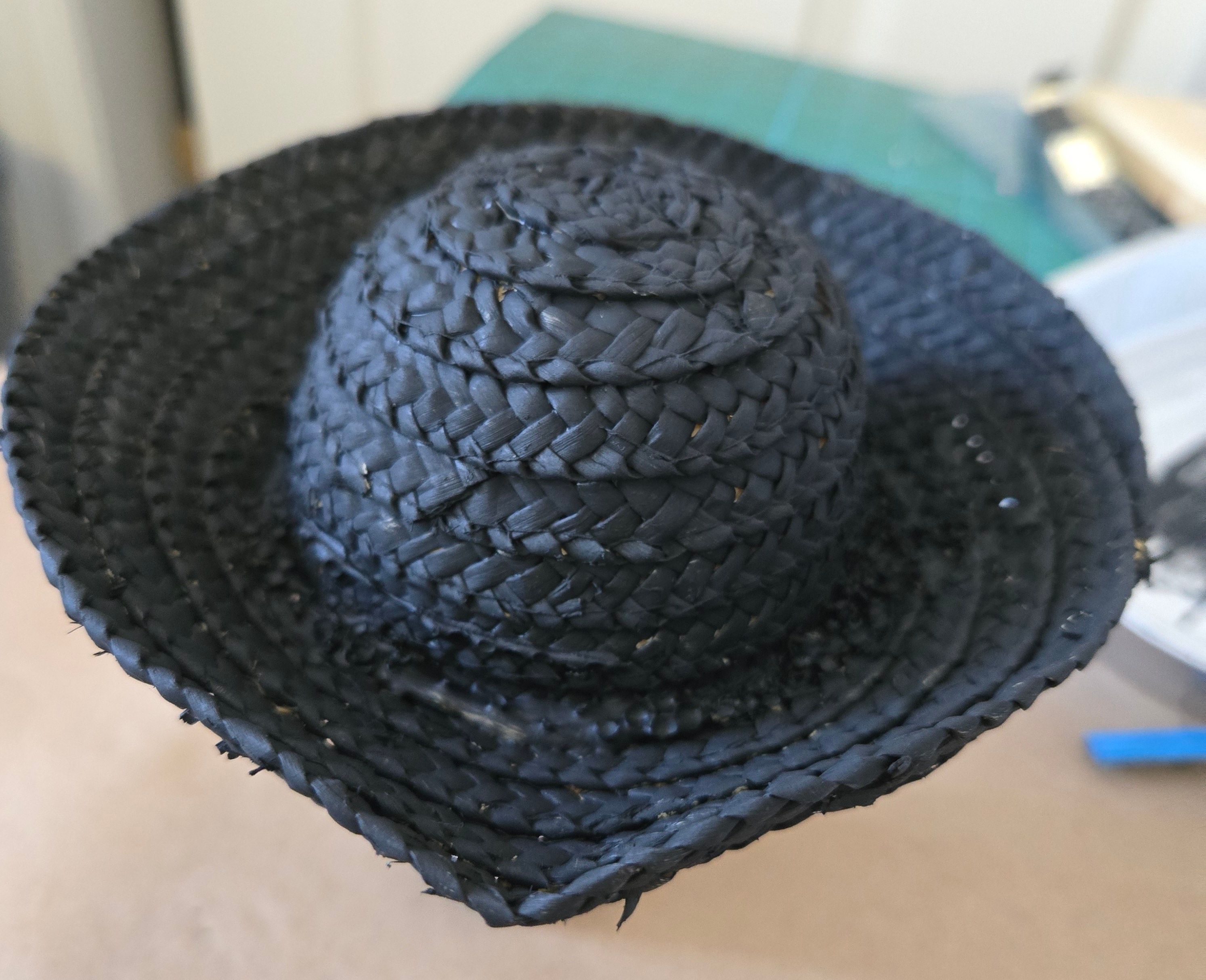
The first coat covered well and dried quickly. It was clear though, that another coat would be needed. The glue still shows through, and the straw weave was difficult to fill. The inside of the crown was painted only along the rim of the hat, where it is likely to be seen.
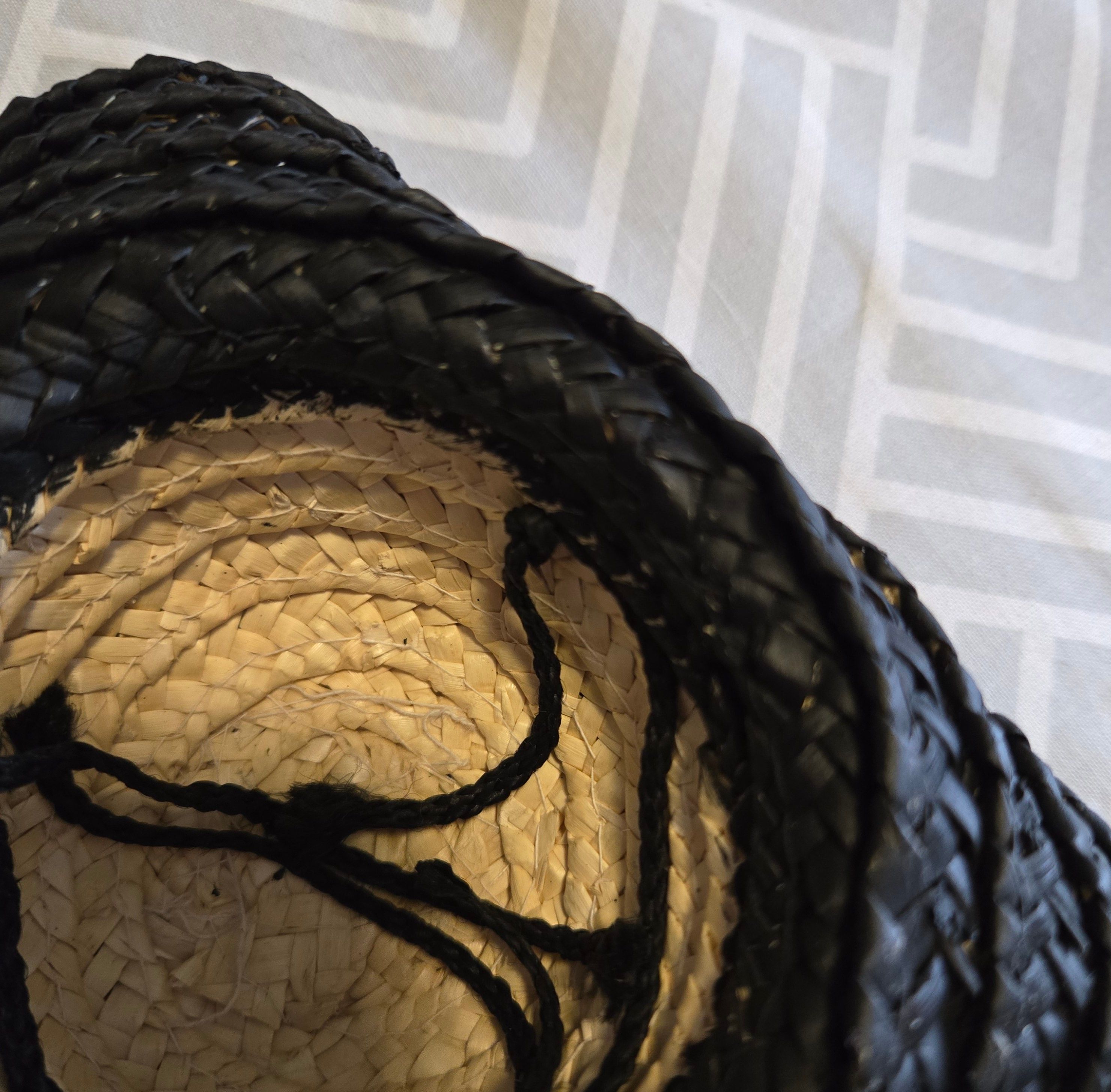
After a second coat, the three sides of the brim were laced to the crown to hold them in place. They were often laced like this in the 18th Century to allow the brim to be let down for shade or reshaping. Armand's are tied off for good.

Here is a view of the lacing on the back and sides.
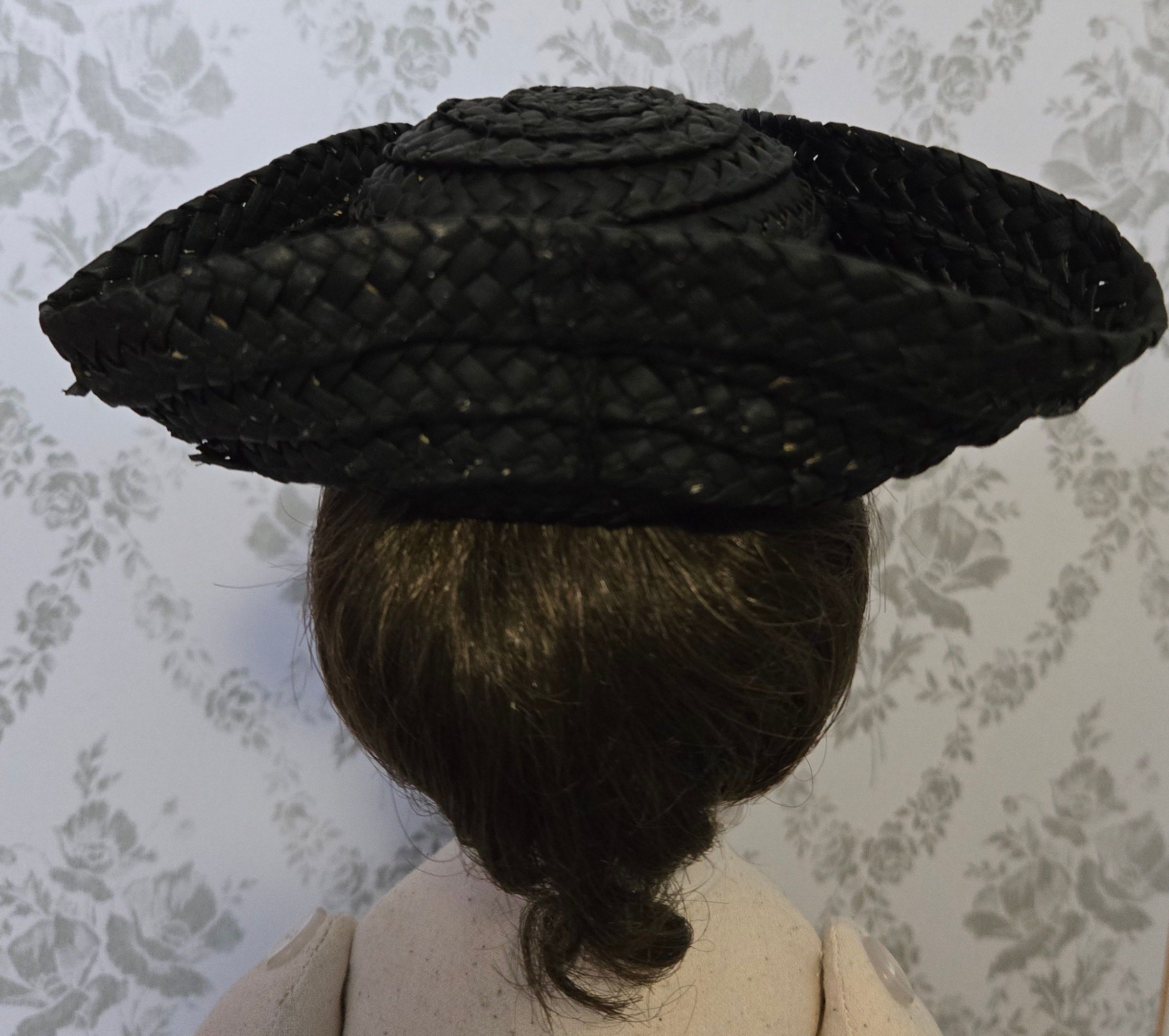
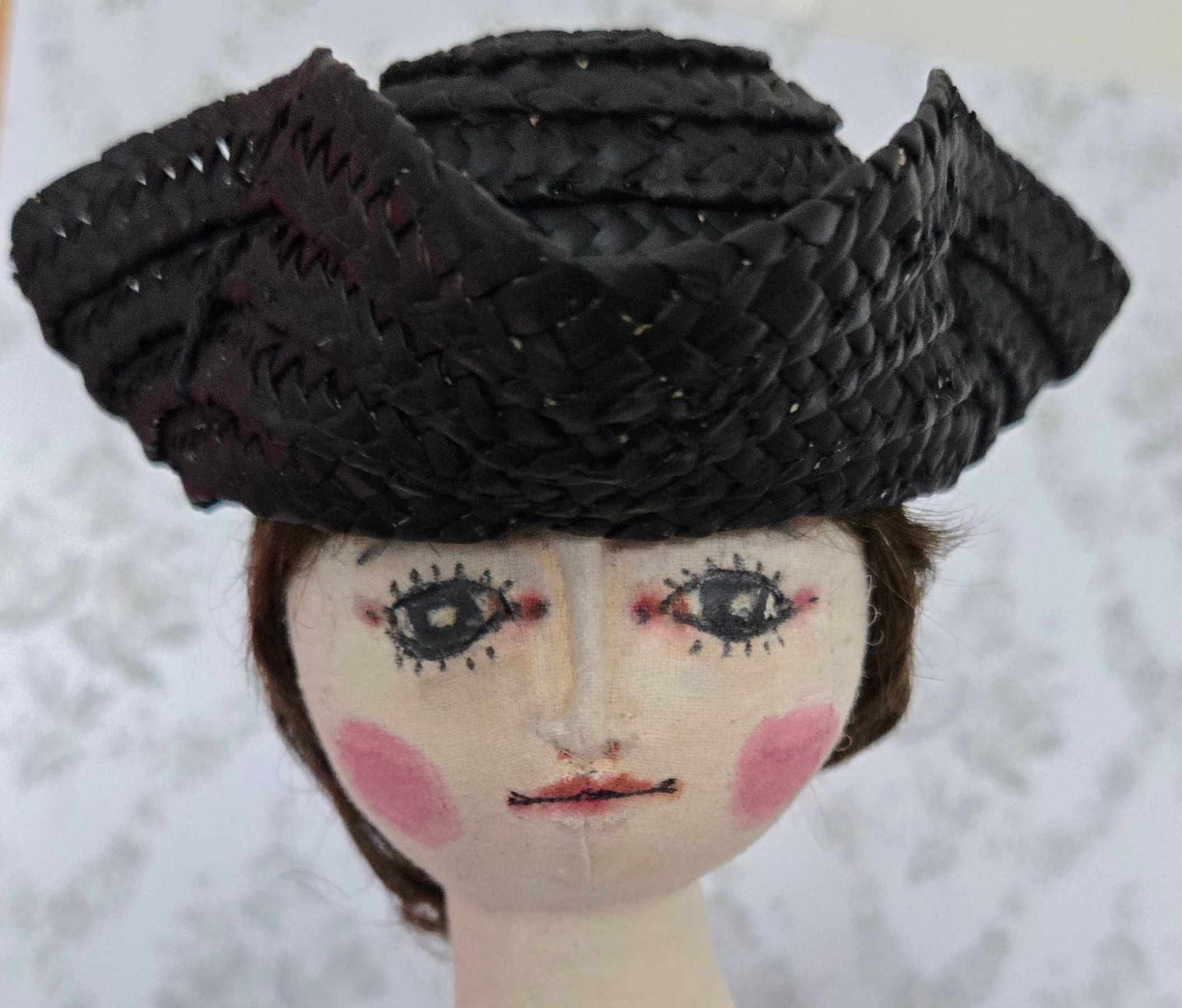
There is still some touching up to do on the straw. That pesky weave makes for a lot of light straw to show up, especially in the photos. The milliner will then use some fixative to help protect the finish and keep the paint from chipping.
The designer has not chosen a lining yet, nor decided on trimmings. Armand is anxious to wear his new hat, but the shop needs to put on his ears first, so it doesn't slide down. Expect a picture of the completed tricorn soon. And perhaps the milliner will decide to cover the second straw tricorn with fabric.
Please check the Gallery and the What's New section for other shop news. Your feedback and comments are much appreciated.
A bientot.
